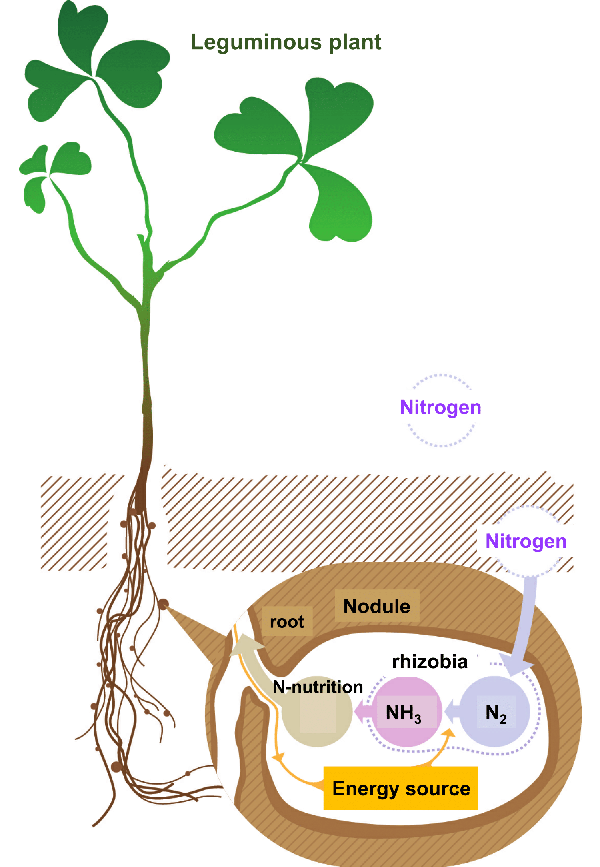Plant hemoglobin improves root nodule symbiosis of leguminous plants.
Leguminous plants, as represented by soybean, form a specific organ, the root nodule, in which symbiotic rhizobia fix atmospheric dinitrogen and supply the fixation products to their host plants as a nitrogen source. In turn, the host plant provides the rhizobia with photosynthates as an energy source. This symbiosis allows legumes to survive in nitrogen-limiting environments. Improved ability of the symbiosis would promise to dissolve the problems on food, environment and energy.
All plants have hemoglobins, of which the origin is identical to that of animal hemoglobins, and which are involved in the various physiological and pathogenic responses of plants. Hemoglobin which shows high affinity with oxygen exists abundantly in the nodules and it is essential for symbiotic nitrogen fixation. We revealed that another hemoglobin which detoxifies nitric oxide is also important for proper symbiosis. Transgenic leguminous plants that highly expresses this hemoglobin gene demonstrate a very useful feature for agriculture; higher and longer life of nitrogen-fixation activity and tolerance to water-logging. This suggests that the hemoglobin gene is a useful genetic tool to improve the symbiotic ability of leguminous plants.

Do plants and animals have common tool to govern their microsymbionts?

Rhizobia in the nodules stop growing and are forced to fix nitrogen, although they grow very actively in rich media. This suggests that the host plant strongly controls its symbiotic rhizobia in the nodule. We identified nodule-specific antimicrobial peptides as the plant factor that provokes rhizobia to differentiate to the symbiotic state. The peptides are targeted to the rhizobia in the nodule cells. Obstruction of the peptide delivery to rhizobia in the secretory pathway mutant results in the loss of activity of nitrogen fixation, showing that the peptides are essential for symbiosis.
Aphids harbor endosymbiotic bacteria Buchnera in a specialized organ called the bacteriocyte. In the bacteriocyte, Buchnera synthesizes and produces essential amino acids for the host aphids, resembling legume-rhizobia symbiosis. Some of the peptides which are specific to the bacteriocyte show the same antibiotic activity as the nodule-specific peptides of legumes. Although legume-Rhizobium symbiosis and aphid-Buchnera symbiosis have evolved independently, they would have recruited antibiotic peptides as a common tool to govern their microsymbionts.


